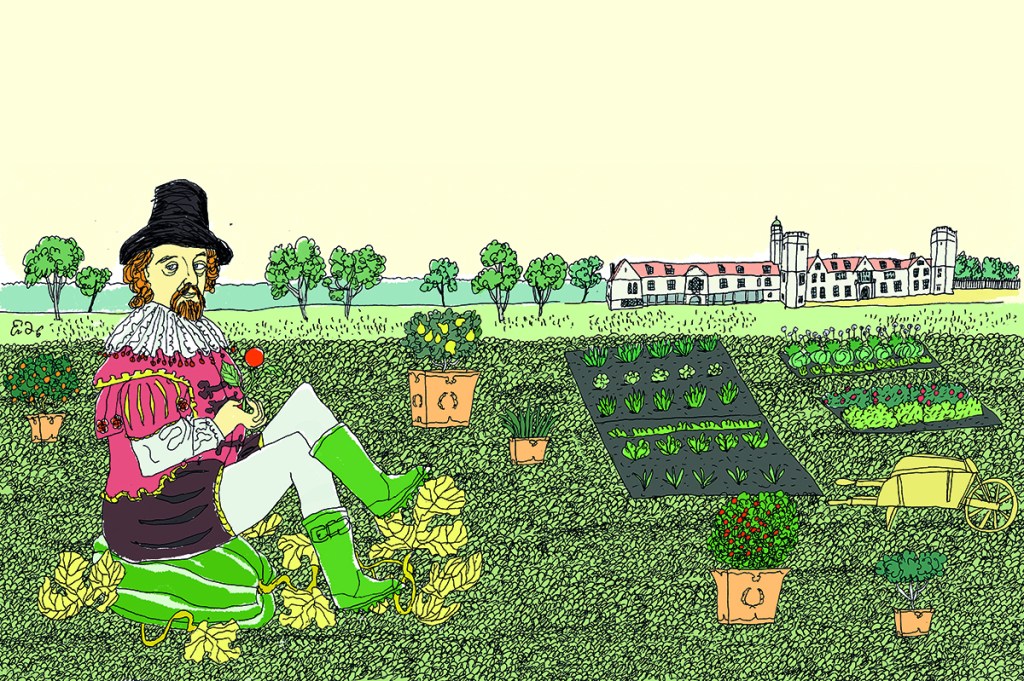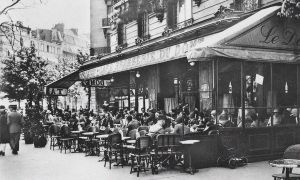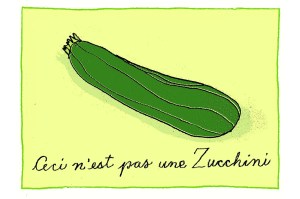Let nobody sneeze at the horticultural arts. Francis Bacon devoted a moderately famous essay to the topic, beginning by pointing out that the very first garden designer was Almighty God. The garden, Bacon argues in his 1625 treatise, offers the purest of human pleasures. As a civilization approaches its peak, its creative geniuses tend to focus on perfecting architecture before finally, at the apex of its development, turning to the art of the garden.
With a name like Bacon, Sir Francis might be pardoned for devoting especial attention to the kitchen garden, whence hail so many excellent pairings for salt-cured pork — roasted cabbage with bacon and pine nuts, for instance, or the inseparable bacon, lettuce and tomato. Not so, however: in his treatise he avoids vegetables and mentions only flowers and fruit, especially in calling for a garden area dedicated to each month of the year: primroses and early tulips in January and February (the great man clearly lived in a warmer climate than ours), lilacs and blossoming plum trees in April, strawberries and honeysuckle in June.
In September, he writes, “come Grapes, Apples, Poppies of all colours, Peaches, Melocotones, Nectarines, Cornelians, Wardens, Quinces.” Here we see Bacon sneaking up to the kitchen garden via the poppy-sown orchard, plucking a couple of wardens — which is what they used to call the Black Worcester pear — brushing through the cornelian cherry shrubs, skipping over the low, grapevine-covered wall and settling himself on a bench next the yellow-hung quince tree, there to regale himself on ill-gotten pears, just like St. Augustine in his days before sainthood.
And what might a North American Bacon, reclining in the kitchen garden, discover at his outstretched feet under such circumstances? In early September, the last tomatoes would still be sprawling in the day’s warm sun, recovering from the nocturnal chill. Deep-purple eggplants glow from behind their foliage. The season’s final round of beans dangle in the breeze.
The Brussels sprouts haven’t met the kind of cold they like yet. They stand tall and just a little pugnaciously in their row, like Stone Age clubs ready to inflict maximum pain on the pates of enemy cave-dwellers. The green and red cabbages are in their gregarious prime, eccentric heads in floppy Elizabethan ruffs. In two or three weeks the carrots will be at their frostbitten peak of sweetness. Only their feathery tops can be seen at the moment, which is fine since carrots, despite their deliciousness, can be a bit devoid of personality due to insufficient socializing outside of their immediate circle.
At the back of the garden, the squash and ornamental gourds are having a field day while raspberry canes run rampant in the backdrop. And beyond that the reddening apple trees stand against the sky. It’s an idyllic scene, well calculated to soothe the soul. “A garden is a lovesome thing, God wot,” wrote the Victorian T.E. Brown in a burst of horticultural fervor: “the veriest school of peace.”
Which of course it is. When St. Augustine gave over his pear-snatching ways and became a saint instead, he bent his brilliant mind to defining peace. He called it the tranquility of order. As the garden slips over the brink of summer into fall, the tranquility of man and plant in harmony settles over the vegetable beds in a kind of mellow content.
For nature, in the firm hands of the gardener, isn’t left to itself; it’s selected and trained up to produce food for people. The most successful kitchen gardens offer beauty for their eyes too: a patch of flowers here, a terracotta pot between the rows there, a charming trellis, perhaps a wooden seat. The vegetables themselves have their own aesthetic appeal, of course, though I do think only the loving eye of a gardener or a gourmet can perceive beauty in a potato plant.
It’s all about the little things, according to Bunny Mellon. Bunny was a self-taught garden designer who married one of the richest men in America, Paul Mellon. She famously oversaw the re-establishment of the Potager du roi, Louis XIV’s kitchen garden, at Versailles, and was close friends with Jackie Kennedy, redesigning the White House Rose Garden. Later in life she spent a great deal of time on her farm retreat in Virginia, Oak Spring, which she modeled according to her vision of beauty, influenced by French garden design.
There, an avenue of carefully pleached crabapple trees led out to the gardens. In her potager, dwarf fruit trees mixed with herbs, vegetables and unpretentious flowers: forget-me-nots, poppies, sunflowers. She brought in French still-life artist Fernand Renard to paint deceptively simple trompe-l’oeil murals throughout the storage area of her greenhouse. Other artists sculpted understated rabbits and groundhogs and birdbaths for odd spots throughout the grounds.
Trees and shrubs were lovingly pruned over years to produce shapes and effects of light and shadow. Though of course she had an enormous staff to take care of the property, she had a rule that no branch thicker than a thumb was to be pruned in her absence: once someone had mistakenly cut down a beloved tree while she was away.
It was of her estate at Oak Spring that she said, “This garden is made of love. And details. Look for the details.” But according to her way of thinking, the details must never draw attention to themselves; everything must seem natural and unobtrusive. When the lawns in the orchard were mowed, she would have the fallen apples picked up before mowing and put back on the lawn afterward. “Nothing should stand out,” she would say. “It all should give the feeling of calm. When you go away, you should remember only the peace.”
This article was originally published in The Spectator’s September 2022 World edition.

























